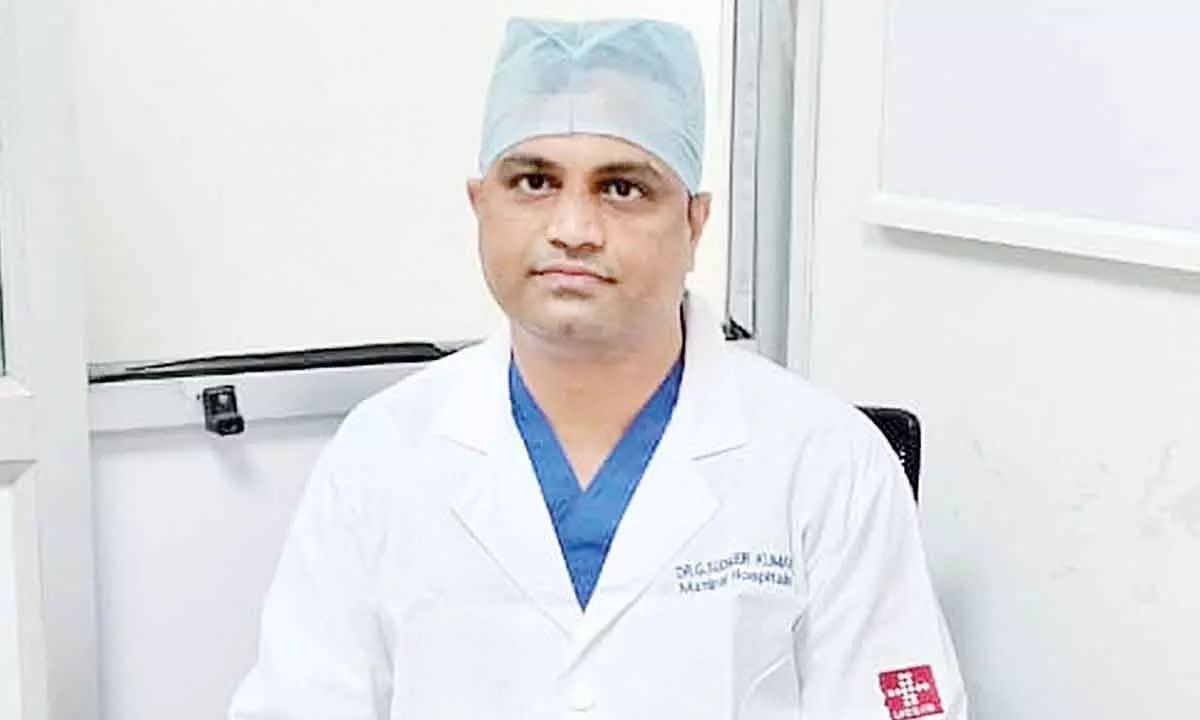World Brain Tumour Day today

Neuro and Spine Surgeon at Manipal Hospitals Dr G Sudheer Kumar
Early diagnosis of brain tumour critical to survival
Tadepalli (Guntur District): Recent data indicates that India reports 40,000 to 50,000 cases of brain tumours every year, said Neuro and Spine Surgeon at Manipal Hospitals Dr G Sudheer Kumar.
Speaking with the media on the eve of the World Brain Tumour Day here on Tuesday, he said that studies have shown that two percent of all cancers are likely to be related to brain. There are over 130 types of recognised brain tumours, but not all of them are cancerous. Many could be present for a long period of time and are diagnosed incidentally.
Spreading awareness and educating people about brain tumours and busting misconceptions and myths that surround this medical condition is the need hour, he avers.
Stating brain tumours are a serious medical condition, he warns that they can be fatal if not detected early. "Most common symptoms of brain tumours include headaches, seizures, progressive weakness or paralysis on one side of the body, problems with vision, speech, or hearing, behavioural changes, persistent nausea, vomiting, or drowsiness," he said.
According to the specialist, brain tumours can be classified into four grades with the first two generally low grades and less likely to return post-treatment. Grade 3 and 4 can arise from the brain itself or may spread to the brain from elsewhere, also known as metastasis. After treatment of grade 1 and 2 tumours, patients can go on to live normal lives. Grade 4 is the most malignant and aggressive with a survival period of six to nine months.
Referring to the procedure of diagnosis, the neurosurgeon said that it is largely based on contrast-based CT scan. Before any surgical planning, patients are put through MRI imaging. Basing on the various scans, doctors then come to a pre-operative diagnosis on what the tumour would likely be.
Most cases of brain tumours are either paediatric or geriatric. While there are various types of tumours seen in children, the most common is medulloblastoma. Among geriatrics, tumours like GBM - glioblastoma multiforme or metastasis in other parts of the body are common.
When it comes to survival, in the case of the Gliomas (a type of cancer), if the tumour is successfully removed and treated, the chances of survival rise to 90 to 95 percent—that is, if the tumour has grown to a certain limit, and has not invaded surrounding structures. If the tumour has grown beyond a certain threshold and has spread to other parts of the brain, it becomes very difficult to remove or treat it. Hence, the chances of survival fall drastically. So, the sooner the diagnosis and treatment, the better are the chances of survival, he added.










